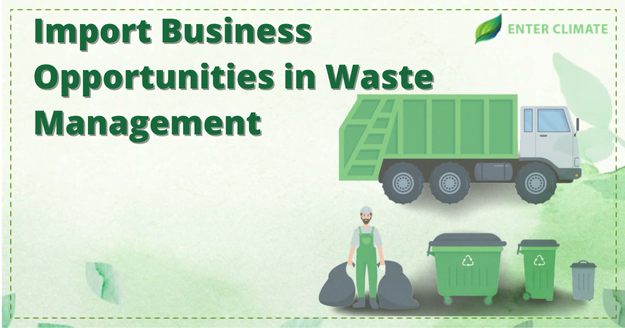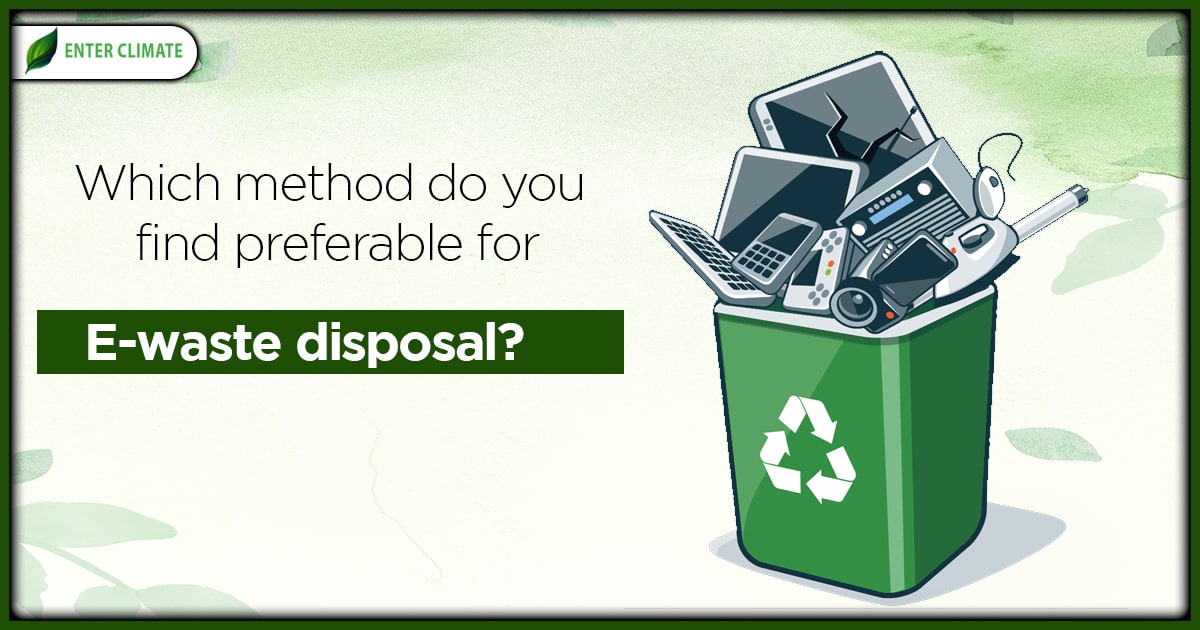What are MOEF Regulations on E-waste Export From India?
 15 Oct, 2022
15 Oct, 2022 
India ranks among the largest exporter of E-waste. While India has banned the import of e-waste, the nation allows the refurbishment and re-exportation of second-hand goods. The lack of authorised recyclers in the country is an important reason for the export of e-waste from India. That said, without a strong network of technologies and processes to encourage the waste recycling ecosystem, the export of waste will always remain a preferred choice. So, now the question arises what is e-waste, and where does this entire e-waste go? Also, are there any regulations on the export of e-waste from India?
To answer these questions, we must first understand that while every updated version of electronics gets a bit more efficient, we should make our phones, tablets, TVs, computers, etc., last as long as possible. Doing so reduces the amount of e-waste that gets dumped into landfills. Thus, most of our electronics still go unrecycled. Most surprisingly, precious metals and rare-earth elements included in these electronic gadgets also go into landfills each year because of careless disposal of these items. People are throwing away money in the form of e-waste daily. The Ministry of Environment, Forest and Climate Change (MoEF)[1] developed regulations on exporting e-waste from India to combat the problem. The export and import of hazardous and other wastes are regulated under the Ministry’s Hazardous and Other Wastes (Management and Transboundary Movement) Rules, 2016.
What comes under e-waste?
E-Waste Management Rules, 2016, released by MoEF, defines ‘e-waste’ as electrical and electronic equipment, entirely or in part discarded as waste by the bulk consumers or a consumer and rejected from refurbishment, manufacturing and repair processes.
Electronic waste (e-waste) generally includes-
- discarded motherboards
- computer monitors
- compact discs
- mobile phones and chargers
- headphones
- television sets
- air conditioners
- white goods – refrigerators, washing machines, dryers
- electronic toys
- home entertainment and stereo systems
- kettles
- Toasters
- heat pumps
- notebooks
- tablets
- lamps
- dish-washing machines
- electric stoves
- vacuum cleaners
- microwaves
- ventilation equipment
- electric shavers
- scales
- calculators
- radio sets
- routers
- video cameras
- Global Positioning Systems (GPS)
- small medical devices
The problem related to e-waste lies with the nature of the material. The e-waste stream comprises various materials — mainly hazardous substances like polychlorinated biphenyls (PCBs), lead, mercury, brominated flame retardants (BFRs), polybrominated biphenyl ethers (PBDEs) and valuable items like steel, iron, copper, aluminium and plastics. Due to this reason, this cannot be dumped in landfill sites and require special treatment like e-waste export from India.
When is E-Waste export from India considered prohibited?
E-waste export from India shall be considered illegal if the following conditions are met.
- Gain permission through misrepresentation, falsification, or fraud.
- The export doesn’t conform to the shipping details mentioned in the movement documents.
- Conducting the export without permission of the Central Government.
Market analysis of e-waste export from India
As per the Global E-Waste Monitor 2017, India yields about 2 million tonnes (MT) of e-waste annually. Out of which, only 20 per cent of global e-waste is recycled. Also, the country ranks fifth among e-waste-producing countries after the United States, China, Japan and Germany. India treated only 0.036 MT of its e-waste in 2016-17.
E-waste in India is increasing at a compound annual growth rate (CAGR) of about 30 per cent. It was estimated that e-waste generation would reach 5.2 MT per annum by 2020. Having said that, the Indian e-waste management market is expected to project a CAGR of 14.25% in revenue and 8.24% in volume during the forecast period 2021-2026.
Around 95 per cent of India’s e-waste is recycled in the informal sector, that too in a crude way. A report on e-waste by the United Nations (UN) highlighted that the waste stream reached 48.5 MT in 2018. The count is expected to be twofold if everything remains the same.
Enforcement Agencies dealing in E-waste Management
The Enforcement Agencies dealing in E-waste Management in India are as follows:
- Central Pollution Control Board (CPCB);
- Ministry of Environment and Forests, Government of India;
- Directorate General of Foreign Trade;
- State Pollution Control Boards (SPCB);
- Customs Authorities and Port Authorities under the Customs Act, 1962.
How to manage e-waste in India efficiently?
E-Waste Management rules were set up to effectively handle the e-waste generated in India. The rules aim to enable the reuse and/or recovery of valuable material from e-waste. This will thereby reduce the hazardous wastes intended for disposal and guarantee the environmentally sound management of all types of waste of electrical and electronic equipment (EEE). Thus, to deal with the export of e-waste from India, one needs to get permission from MoEF and State Pollution Control Board (SPCB), which stands for State Government’s State Pollution Control Board.
Who Needs to Obtain a License for the Export of E-Waste from India?
As specified under Schedule I, the following entities need to obtain permission or license from the MoEF to export e-waste from India –
- E-Waste Dismantler
- E-Waste Producer
- E-Waste Manufacturer
- E-Waste Refurbisher
- E-Waste Collection Organisations
- Mass Quantity Consumer of Electronic Devices
Documents Required to Get a License to Enable Export of E-Waste from India
The following documents are required for the issuance of the license allowing E-Waste export from India –
- NOC from MoEF
- Permission License/ Certificate from MoEF for export of E-Waste
- Consent Letter from SPCB
Procedure for import/export of e-waste from India
An applicant must obtain a grant of authorisation to export e-waste from India. Here’s the detailed process to be followed –
- Any individual seeking to export e-waste from India, as directed in Part A & B of Schedule III and Schedule VI, must submit an application to the MOEF&CC in Form 5 (Appendix E).
- The application must be accompanied by insurance cover for the proposed transboundary movement of hazardous & other wastes.
- In addition, the importer must submit the prior informed consent (PIC) in wring from the importing nation for the type of waste specified in Part- A of Schedule III and Schedule VI.
- Once the application reaches the MoEF, the following procedure is carried out in a detailed manner:
- To get the permission, the applicant needs to show a physical presence of the business in India;
- The applicant then has to get a No Objection Certificate (NOC) from SPCB and MoEF;
- MoEFwill forward a copy of the granted permission to the concerned SPCB and the Pollution Control Board of the State where the port of export of e-waste from India is located.
- A copy is also forwarded to the Port and Customs authorities concerned for promising compliance with the conditions of export permission.
- The exporter must ensure that no consignment is shipped before consent is received from the importing nation.
- The exporter ensures that a movement document in Form 6 accompanies the shipment.
- The exporter must also maintain records of the e-waste exported from the country.
Conclusion
E-waste has emerged as one of the fastest-growing waste streams. The whopping count of electronic equipment reaching end-of-life poses a huge challenge. As long as electronic products have a variety of toxic chemicals and are designed without recycling, they will imperil public health and the environment. Considering the future scenario, it is vital that its safe management, like e-waste export from India, is done in an organised way with ample resources and sustainable technologies on the one hand and mechanisms and effective legislation on the other.
Read our Article: Core Components of Waste Management in India













